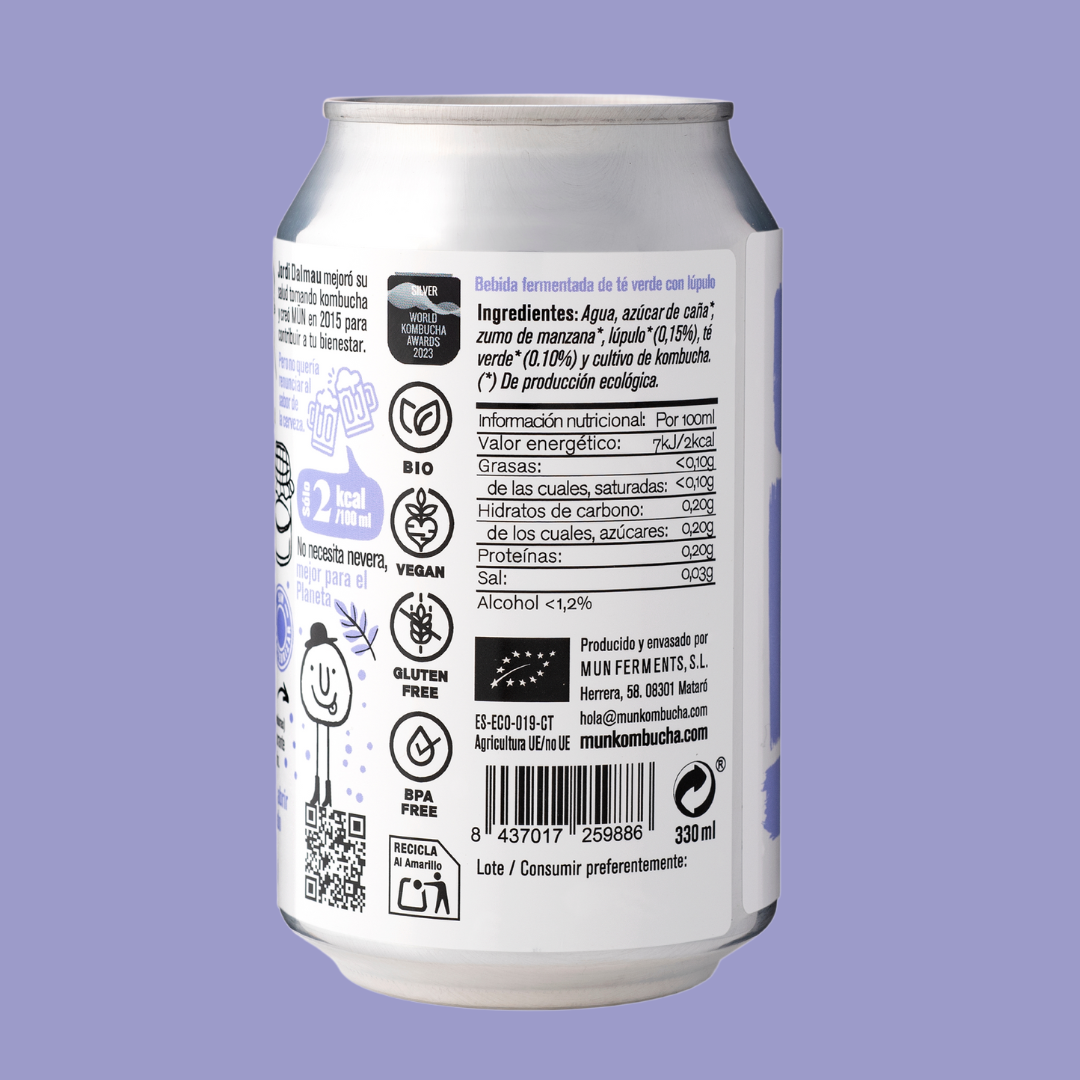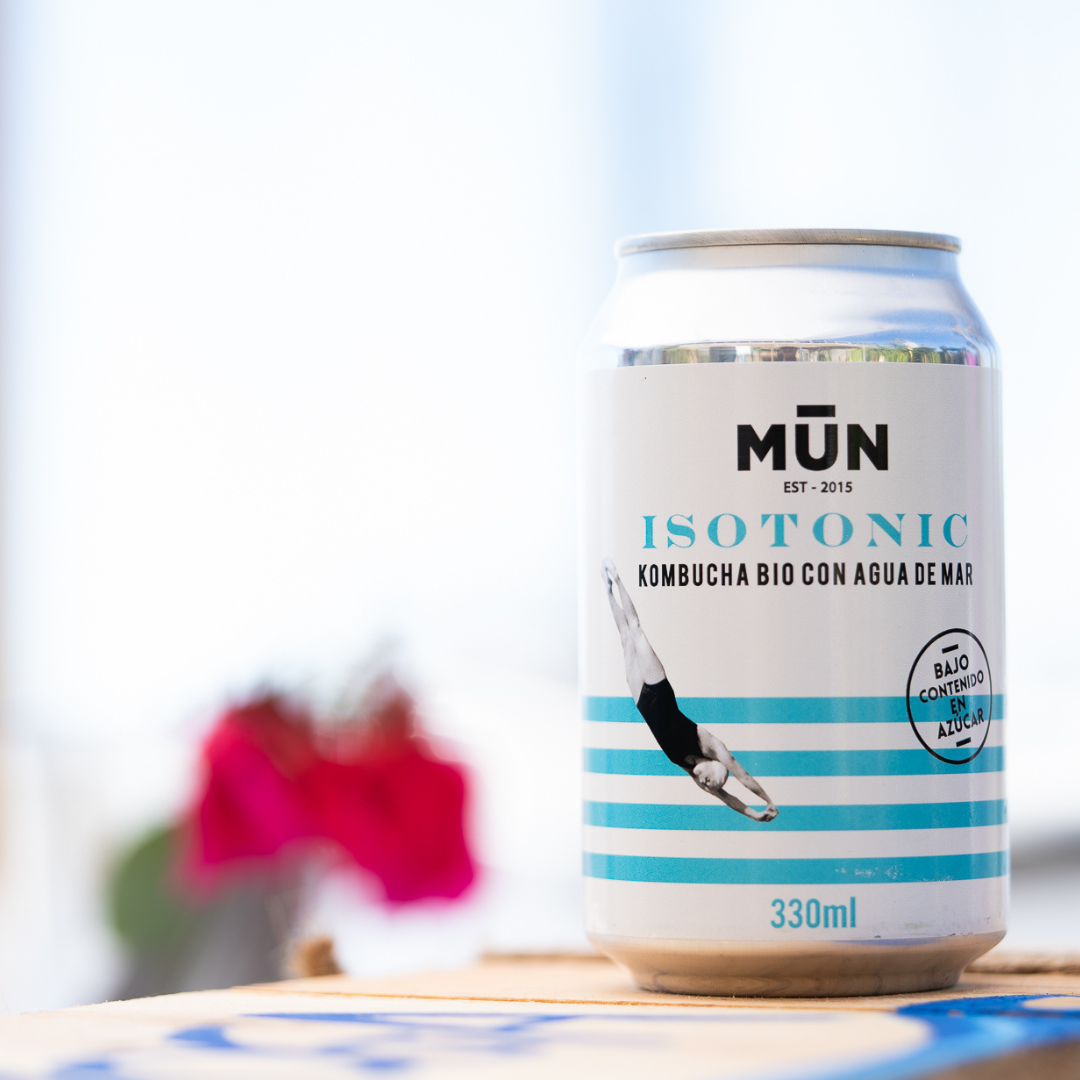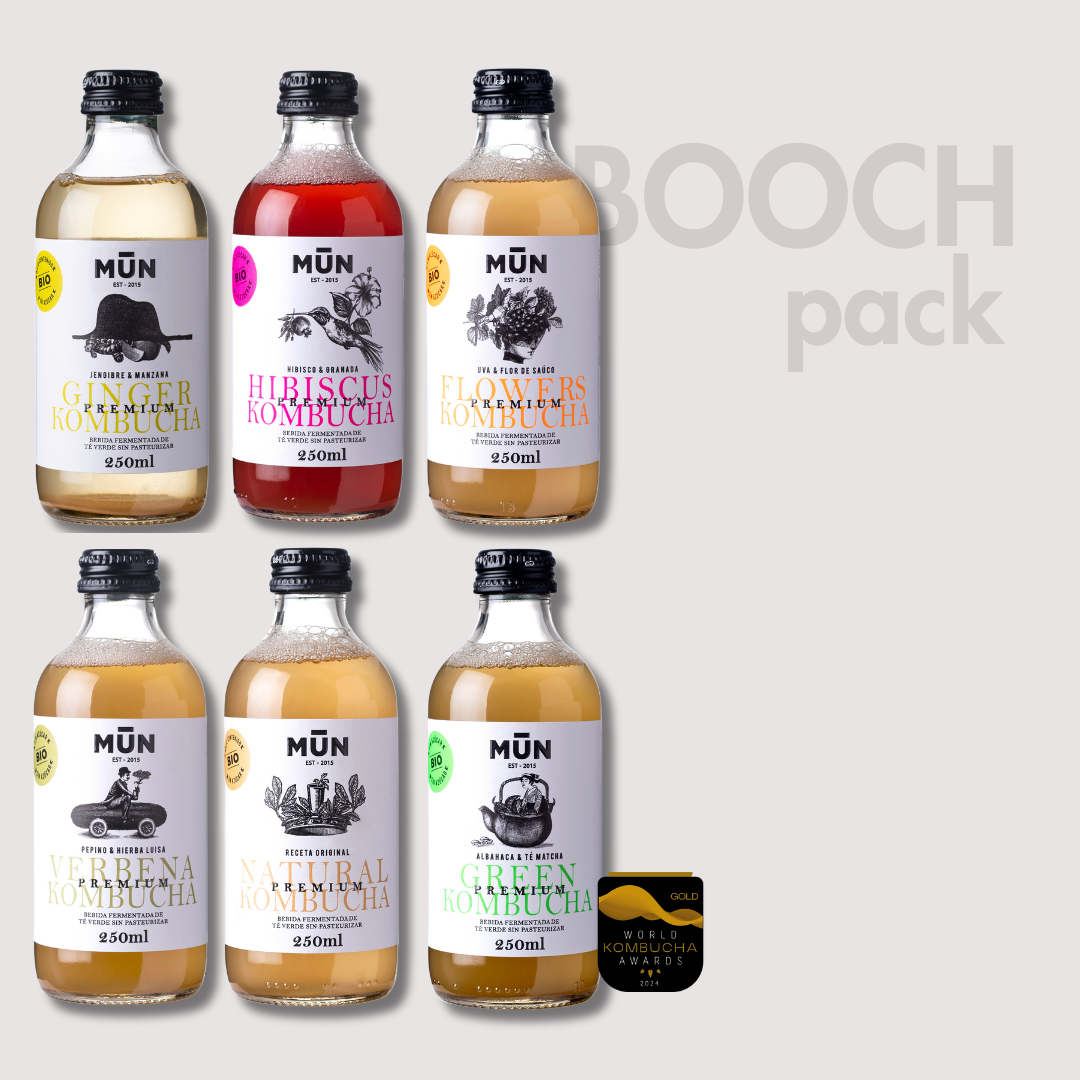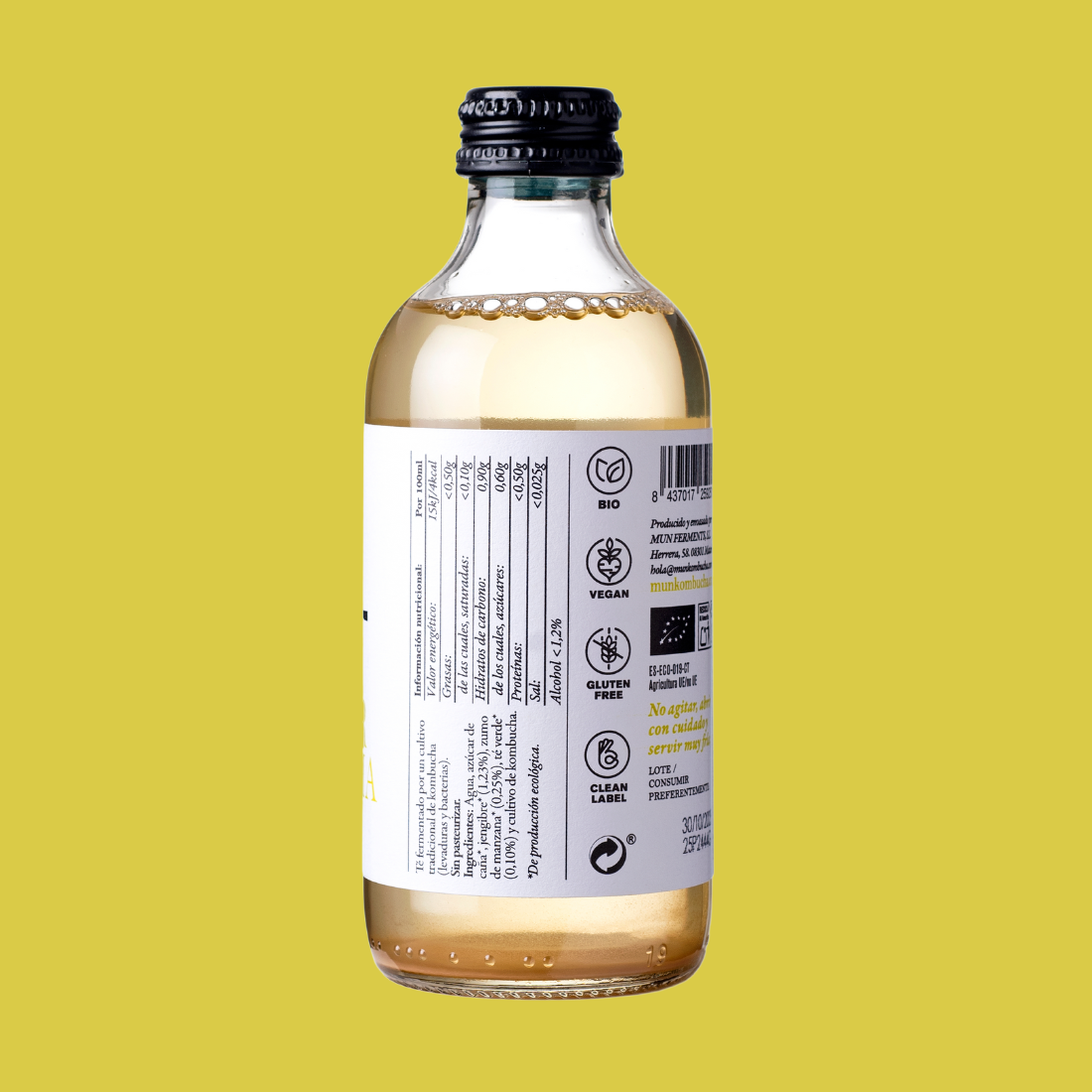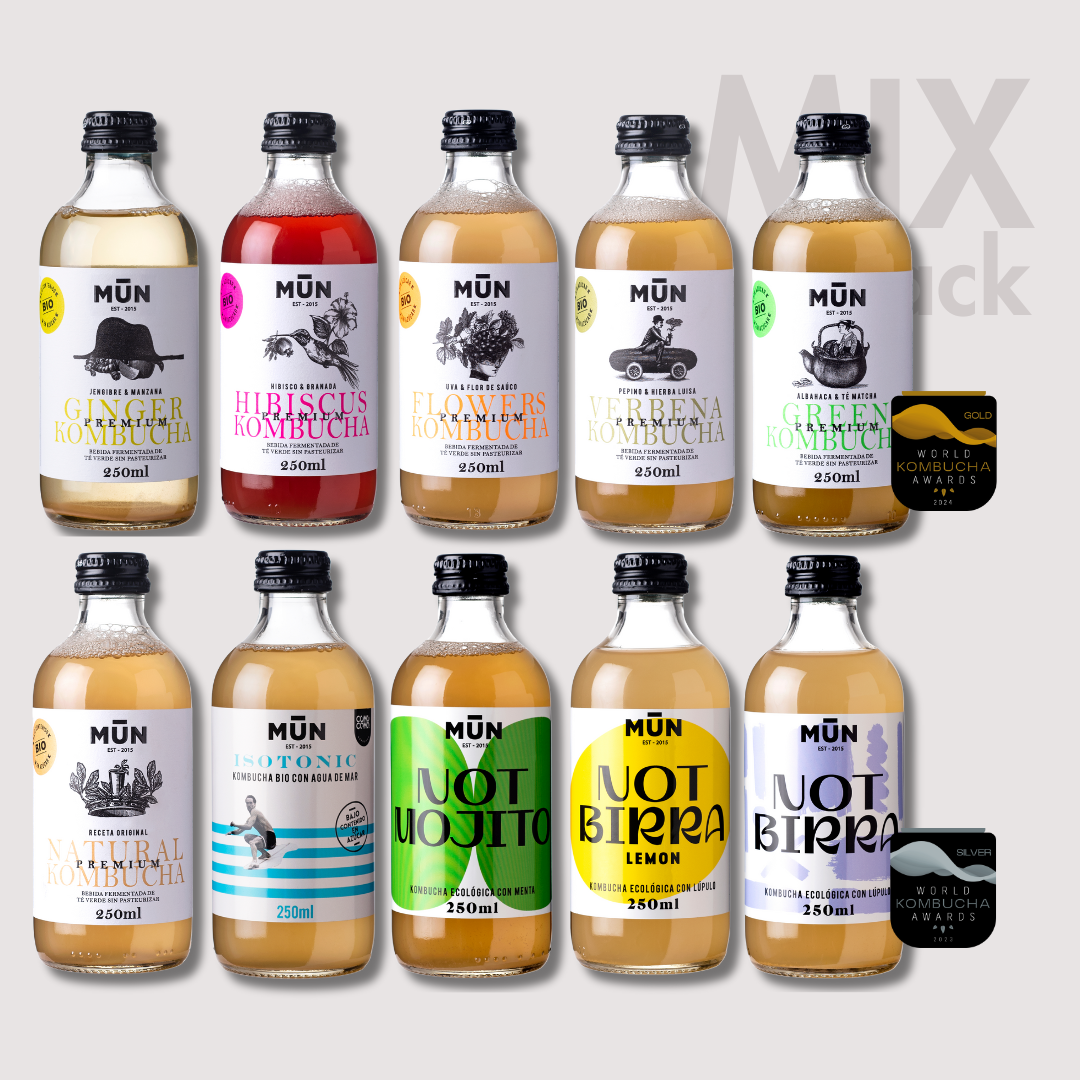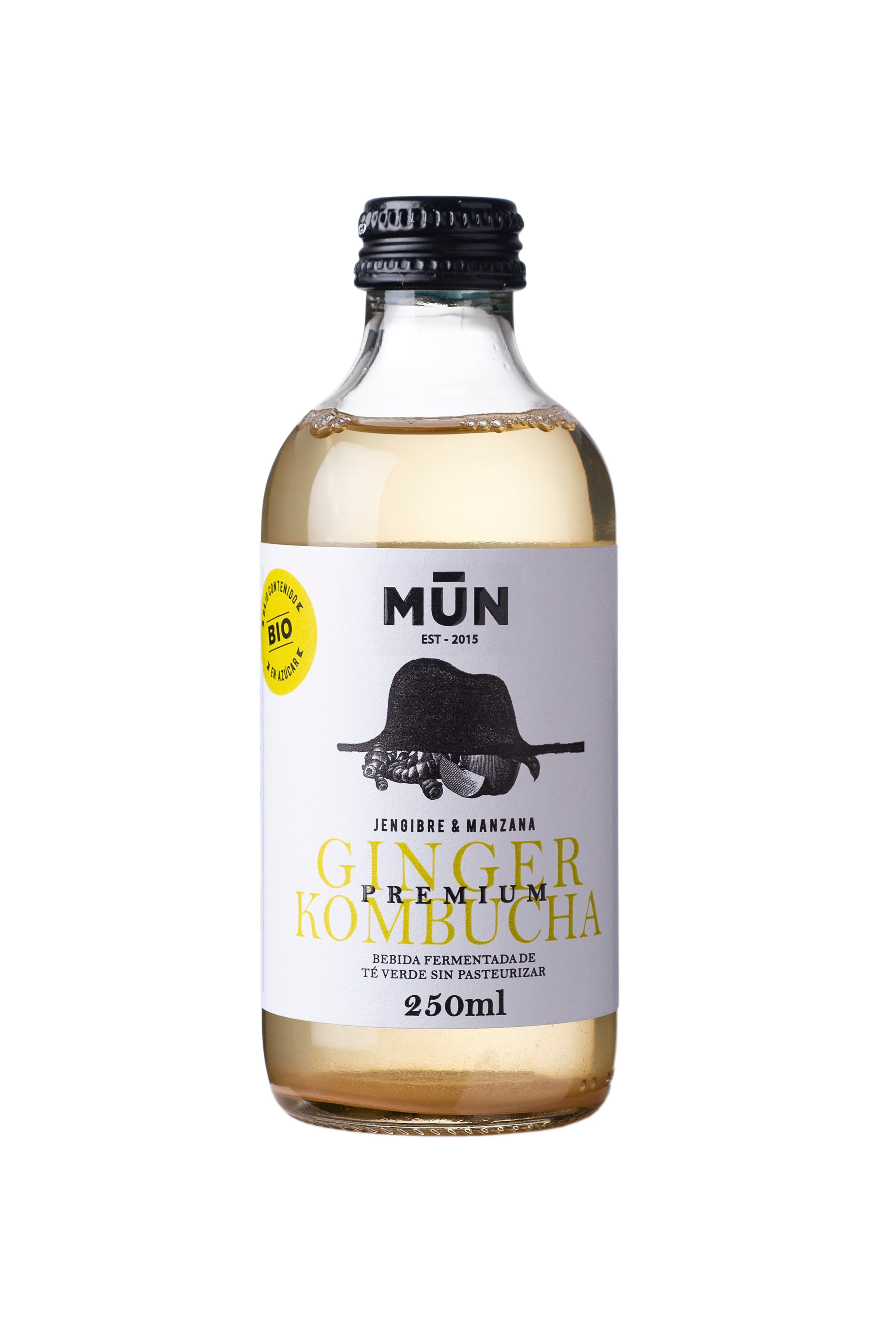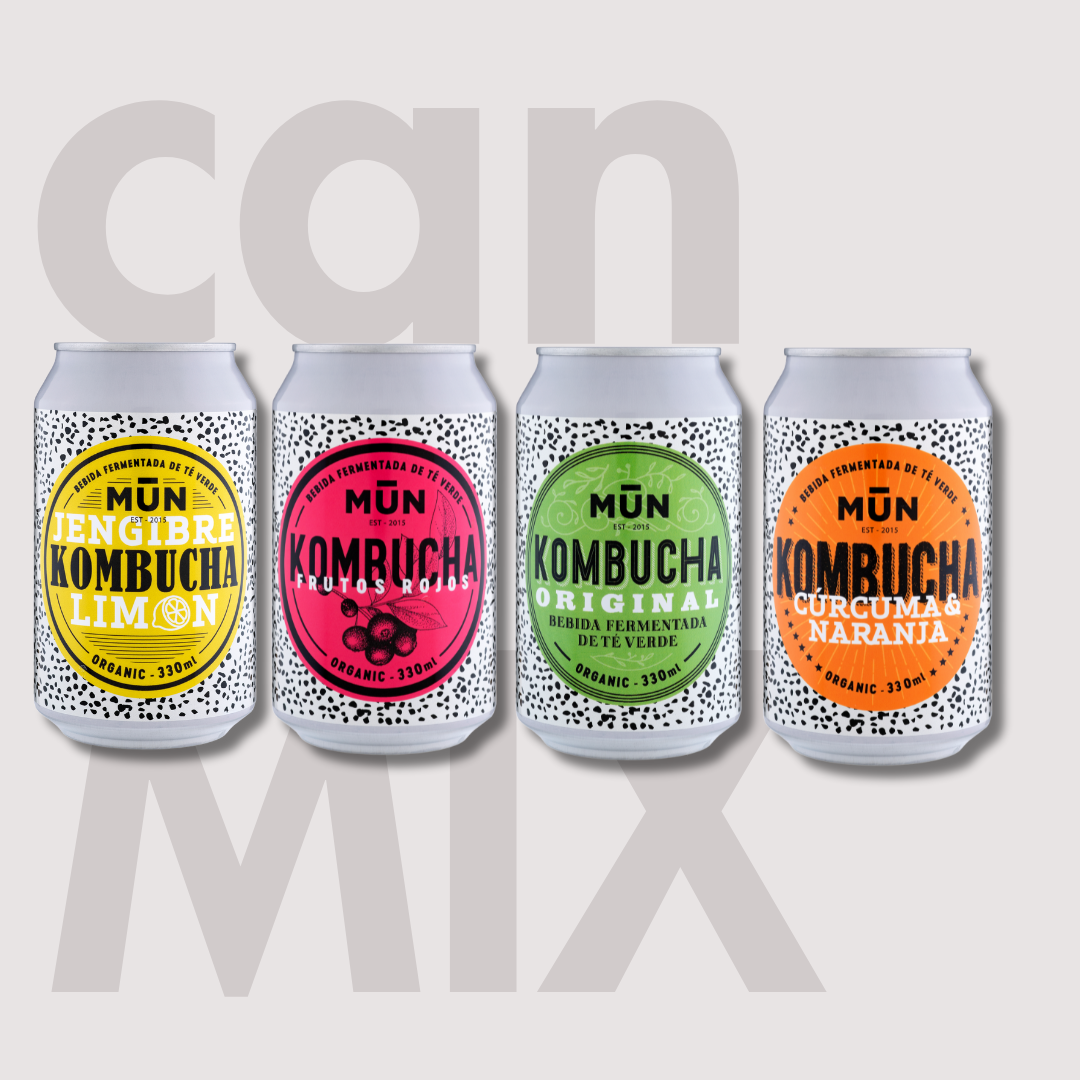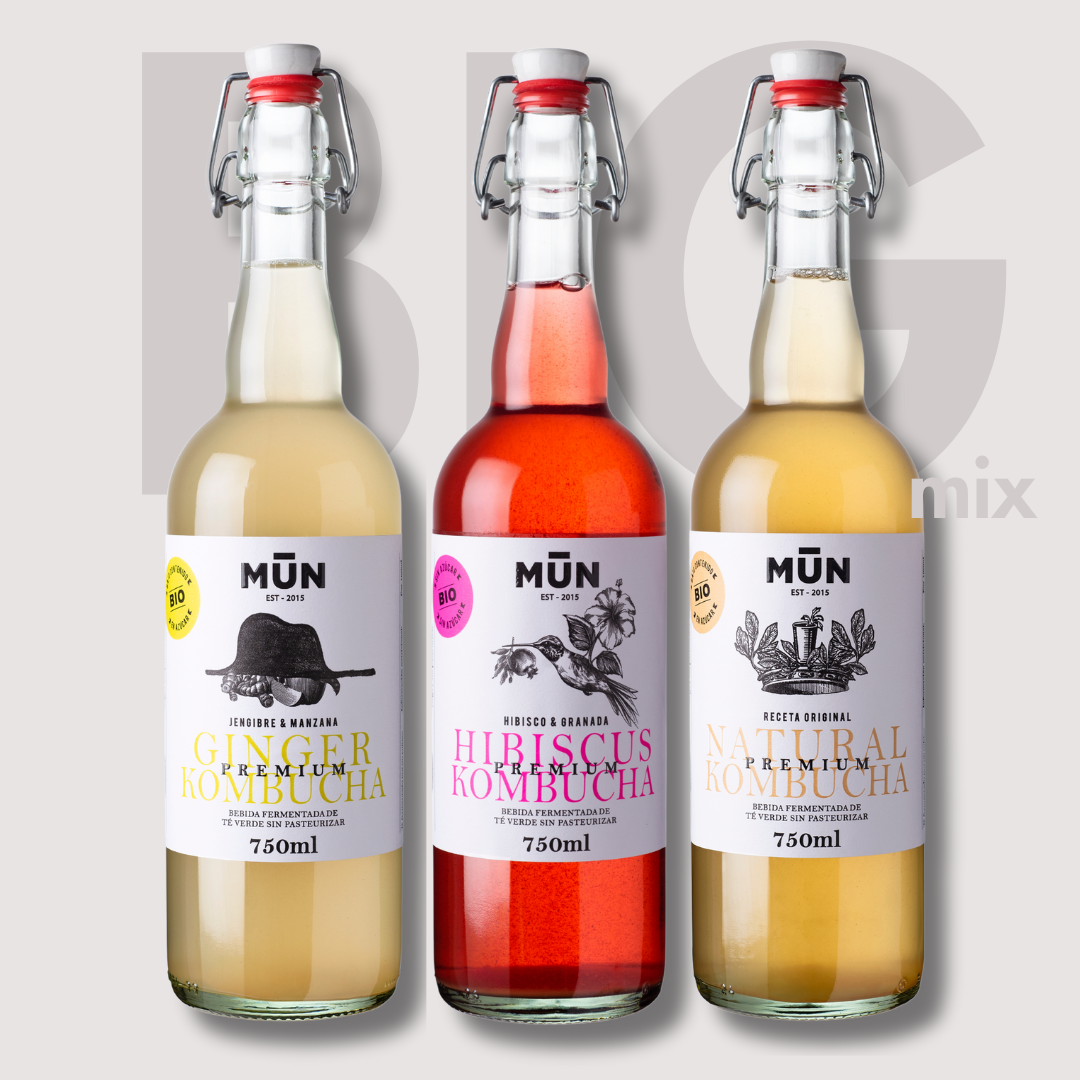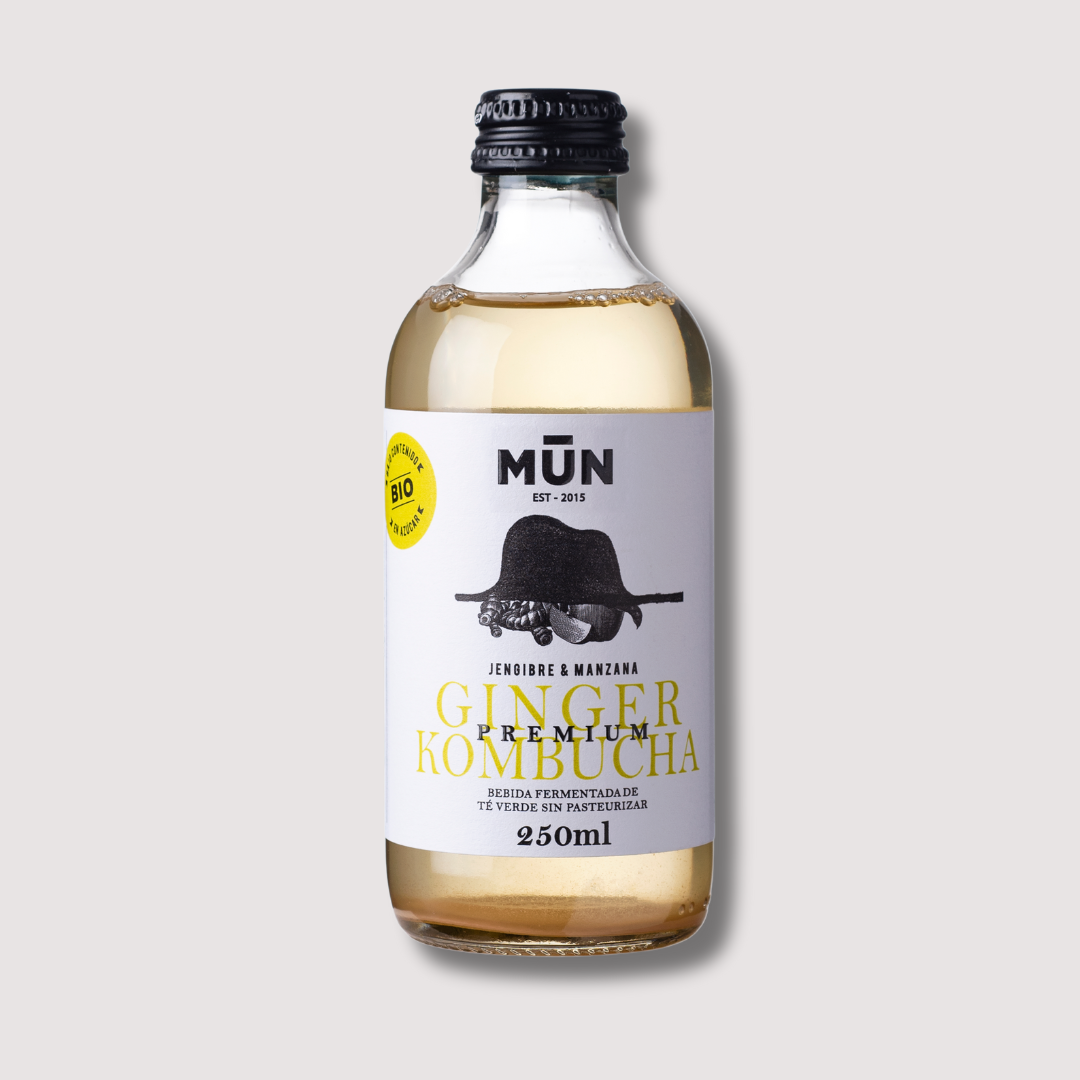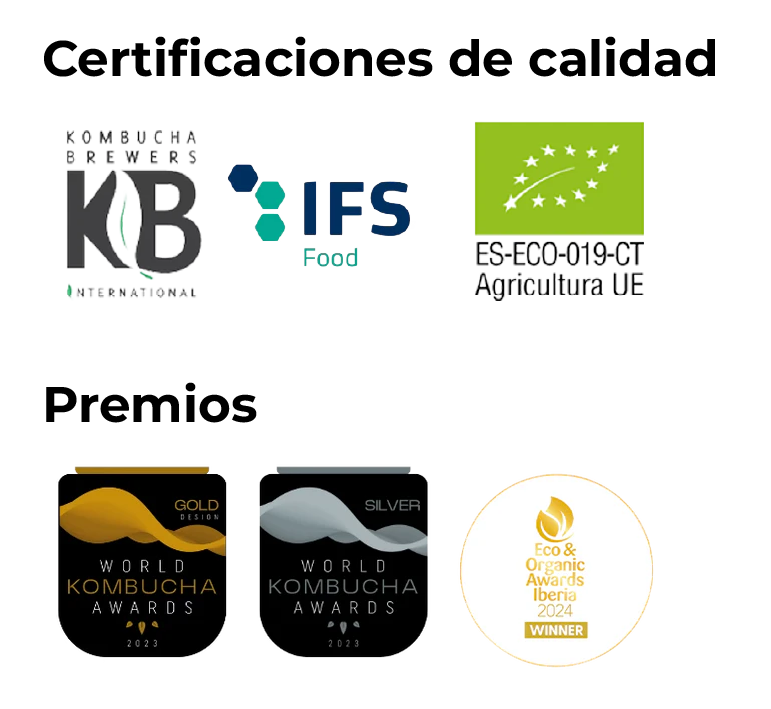Foods and drinks that are produced through controlled growth of bacteria and yeast are known as fermented .
During the fermentation process , yeasts and bacteria isolate the main compounds from food and transform them into organic acids and/or alcohol . It is for this reason that fermented foods have a very special and identifying flavor, texture and aroma.
There is a wide variety of fermented foods. All cultures have their own fermented ingredients that add richness to their gastronomy. In the case of food, the spectrum is very broad and includes everything from meat and fish, to vegetables, fruits, etc.
The human diet has always included fermented foods. In fact, the history of fermentation is as old as humanity, since at first it was a method of food preservation. And by fermenting a food, sugars become acids, gas or alcohol. Nowadays they are back in vogue and have gained a lot of popularity as they are considered beneficial for health .
Fermentation explained in a more technical way
Fermentation is a chemical process that occurs without the need for oxygen and produces an organic substance. This process converts complex molecules into simpler molecules and generates chemical energy in the form of ATP.
Fermentation begins with the breakdown of the glucose molecule in a process called glycolysis, which produces pyruvic acid. If oxygen is not available, fermentation uses an organic substance to reduce NADH to NAD+, ultimately producing a substance derived from the initial substrate that is oxidized. There are different types of fermentation depending on the final substance produced.
This process was discovered by Louis Pasteur and can be carried out in the absence of oxygen by microorganisms such as bacteria, yeast and some animals and single-celled organisms. In fermentation, mitochondria or structures linked to the cellular respiration process do not intervene.
What is fermentation (for dummies)?
Fermentation is a natural process that occurs when certain bacteria or yeasts break down the sugars in food without the need for oxygen. This produces beneficial compounds such as organic acids and vitamins, and can improve the taste and texture of foods. In addition, fermented foods are more digestible than the original ones, and facilitate digestion and absorption of nutrients .
Brief history of fermentation
The appearance of fermented foods is not modern at all. Although now everyone talks about them and it seems that they have emerged very recently in our vocabulary to be implemented in our kitchen and in our daily lives, they were born when hominids began to relate in a fixed way with the soil: beginning a sedentary lifestyle and agriculture.
Chance was, as in so many things, the mother of the fermented. The first contact with alcohol began in the most innocent and spontaneous way when a human consumed some fruit that had fallen from the trees , perhaps too ripe and that had begun the fermentation process thanks to the sugar it contained . Without knowing the possible consequences, this fruit was consumed by those who found it in their path and had to fill, no matter what, their stomachs. After the fruit, casual fermentation reached the animal protein. Some decomposing corpse could have become a delicacy for the first humans who encountered it.
Over time, those early humans learned to control the process. In this way, what was a chance discovery ended up becoming a tool to make food more nutritious, safe and long-lasting . According to documentation, fermentation was already taking place in China more than 7,000 years ago. In Egypt, 3,000 ago, this method was also used, as well as in pre-Hispanic societies in Mexico, more than 2,000 ago. Different fermented foods were considered sacred by different religions and there have been references to fermentation in Ayurvedic medicine for millennia.
Preserving food has always been essential. Many of the edible things that Mother Nature provides are seasonal and it is impossible to find them all year round. It is for this reason that we had to sharpen our ingenuity and our ancestors had to develop different fermentation methods of their own . Among others, vegetables, fruits and cereals, the main raw materials, were fermented. Meat and fish were also included in this fermentation process as an essential source of protein, especially in societies with low carbohydrate consumption .
Did you know that the star dish of the Greenland Inuit is kiviat. The preparation of this culinary delight is anything but simple, but we are sure that the effort is worth it to whoever prepares it. Simply fill a seal with five hundred birds and let it rest under a rock for several months, or until the desired level of putrefaction is reached. As it could not be otherwise, the dish should be served cold. Read the recipe in case you dare.
Benefits of fermented foods
Not all fermented foods have the same properties, but most share some common characteristics that benefit our entire body, especially our intestine. Take note of them!
- More nutritious and digestible foods: Foods have already been partially digested by bacteria or yeast, so they are more easily digestible.
- They promote the absorption of nutrients: fermentation helps to break down and destroy acids such as, for example, phytic acid , which have the potential to reduce the absorption of other nutrients beneficial to health such as zinc, calcium or iron.
- They promote intestinal flora : fermented foods help repopulate our intestine with healthy microorganisms, in addition to taking care of our intestine, they strengthen the immune system . A poor microbiota increases the risk of many diseases ( study , study ). Each fermented food provides a different type of bacteria, increasing our bacterial diversity ( study , study , study , study ). Greater microbiota diversity is linked to lower health risks ( study , study , study ).
- Increases the presence of vitamins: fermented foods are an excellent source of essential nutrients and vitamins . Some of the nutrients that we can find in this type of food are vitamin B12 or vitamin B9, better known as folic acid; and vitamin K2 is difficult to find in non-fermented foods: it is an essential vitamin for bone and coronary health ( study , study ), as well as prevention of certain types of cancer ( study , study , study ).
Types of fermentations
Depending on the type of culture responsible for fermentation, we can have different types:
- Alcoholic fermentation : carried out in particular by yeast and converts carbohydrates such as glucose , fructose and sucrose into ethanol and carbon dioxide CO2 with the production of a small amount of metabolic energy in the form of ATP
- Acetic fermentation : it is a redox reaction produced by acetic bacteria of carbohydrates , primary alcohols , polyols or aldehydes inacetic acid.
- Lactic fermentation : produced by certain bacteria and some animal cells , which convert carbohydrates such as glucose into lactic acid with the production of a small amount of metabolic energy in the form of ATP
- Malolactic fermentation : carried out by bacteria that transform malic acid into lactic acid. It is used to stabilize wines for aging.
- Propionic fermentation : Propionic fermentation is produced by sporogenous bacteria of the genus Propionobacterium and is what produces the characteristic eyes of Emmental cheese.
- Butyric fermentation : it is the conversion of carbohydrates into butyric acid , by the action of anaerobic bacteria Clostridium butyricum, in the absence of oxygen.
In the presence or absence of oxygen
Fermentations can occur in the presence or absence of oxygen.
The main difference between fermentation with oxygen ( aerobic ) and without oxygen ( anaerobic ) is the type of final product that is produced and the amount of energy that is released in the process.
In anaerobic fermentation , organisms do not have access to oxygen, so they cannot completely break down carbohydrates. Instead, organisms use an alternative metabolic pathway to break down carbohydrates into simpler compounds, such as lactic acid or ethanol. The amount of energy released in anaerobic fermentation is less than in aerobic fermentation.
Direct alcoholic fermentations
Direct alcoholic fermentation is a process in which the sugars present in foods are converted into ethanol and carbon dioxide through the action of yeasts. It is a process used to produce many alcoholic beverages, such as wine , cider , tepache or mead . In the case of wine, the grape is the base food and the yeasts present in the skin of the grape or added in a controlled manner, convert the sugar of the fruit into ethanol and carbon dioxide.
Direct alcoholic fermentation is a controlled process and it is necessary to have prior knowledge to carry it out, since it requires an adequate temperature and humidity environment, as well as control of the yeasts and fermentation time to obtain the desired product. .
Indirect alcoholic fermentations
These are fermentations in which a prior process is necessary to transform complex sugars into simple ones. In the case of beer, the base is cereal, which is converted into sugars through malting, then the yeasts are responsible for converting them into ethanol and carbon dioxide. In the case of sake, koji is used. Other examples could be Masato or chicha .
Derived from alcoholic fermentations, distillates
Distillates are alcoholic beverages that have been subjected to a distillation process, in which the volatile components of a liquid mixture are separated by the difference in boiling points. Distillation is used to increase the alcohol content of a drink and to improve its flavor and aroma.
The most common spirits include whiskey, rum, brandy, tequila, gin, vodka and cognac. Each of these distillates is produced from a specific raw material, such as grain for whiskey, sugar cane for rum, grapes for brandy and agave for tequila.
Distillation is carried out in an alembic, a piece of equipment that allows the alcohol content to be increased by removing water and concentrating ethanol. Often, distillates are aged in oak barrels before being bottled to give them a unique flavor and aroma.
In summary, distillates are alcoholic beverages that have been subjected to a distillation process to increase their alcohol content and improve their flavor and aroma. They are produced from a specific raw material, and are usually aged in oak barrels before being bottled.
Acetic fermentation
Acetic fermentation is a process in which sugars or carbohydrates are converted into acetic acid through the action of acetic bacteria. It is a process used to produce products such as vinegar, sour wine, and soy seasoning.
In the case of vinegar, the raw material is wine, which is subjected to a second fermentation in which acetic bacteria convert ethanol into acetic acid. In the case of sour wine, the wine undergoes acetic fermentation before being bottled.
Acetic fermentation is a controlled process, which requires an adequate temperature and humidity environment, as well as control of the acetic bacteria and the fermentation time to obtain the desired product. It is important to mention that vinegar and sour wine are rich in acetic acid and have medicinal and culinary properties.
Derived from acetic fermentations
Shrub is a drink made from fruits, sugar and vinegar that has a historical origin dating back to the 17th and 18th centuries. The name "shrub" is an English word that comes from the Arabic word xarab, which means "mixture." Shrubs are made by mixing fruits, sugars and vinegar, and then left to macerate for several days or weeks. This mixture is shaken regularly and strained before being bottled. The result is a drink with a sweet and sour taste, which can be enjoyed alone or mixed with water or alcohol.
On the other hand, vinegar pickles are a specific variety of pickles that are made by adding vinegar to the mixture of vegetables, salt, sugar, and spices. Vinegar helps create an acidic environment in which acetic bacteria can thrive and ferment vegetables. This fermentation process is similar to that used to produce vinegar, but instead of converting ethanol to acetic acid, it ferments vegetables.
Like traditional pickles , vinegar pickles have a tangy, tangy flavor and are rich in nutrients and probiotics. However, they may have a different flavor due to the addition of vinegar, and may be more acidic than traditional pickles. They are often used as a condiment or as an addition to savory dishes and sandwiches.
It is important to mention that pickles with vinegar must be kept refrigerated and must be consumed in a short period of time, since vinegar helps preserve them but does not protect them from the proliferation of unwanted microorganisms, making it important to follow food safety recommendations. .
lactic fermentations

Lactic fermentation is a process in which the sugars present in foods are converted into lactic acid through the action of lactic acid bacteria. It is a process used to produce products such as yogurt, cheese, kefir and sauerkraut.
In the case of yogurt, milk is the raw material and added lactic bacteria convert lactose into lactic acid, which gives yogurt its tangy flavor and texture. In the case of cheese, milk is also the raw material, and the lactic bacteria and enzymes used help to coagulate the milk and give it its unique flavor and texture.
Lactic acid fermentation is a controlled process, which requires an adequate temperature and humidity environment, as well as control of the lactic acid bacteria and the fermentation time to obtain the desired product. It is important to mention that fermented dairy products, such as yogurt and cheese, are rich in nutrients and probiotics and may have benefits for digestive health and the immune system.
Lactic fermentation of vegetables
Lactic fermentation of vegetables is a process in which vegetables such as cabbage, cucumber, onion, radish, among others, are used to produce products such as sauerkraut , kimchi and kvass . In this process, vegetables are mixed with salt and left to ferment in a closed container for several days or weeks. Fermentation is caused by natural lactic acid bacteria present in vegetables and in the environment.
During fermentation, lactic bacteria convert the sugars present in vegetables into lactic acid, which gives the products a sour and spicy flavor. The fermentation process also helps preserve vegetables, as lactic acid helps prevent the growth of undesirable microorganisms.
Fermented vegetables are rich in nutrients and probiotics, and are a great way to add variety to your diet. In addition, they are very versatile in the kitchen, they can be used as a garnish, in sauces, in sandwiches, among other applications.
Lactic fermentation of legumes

Lactic fermentation of legumes is a process in which legumes such as beans, soybeans, chickpeas, among others, are used to produce products such as miso , tempeh and natto . In this process, legumes are pre-cooked and mixed with a culture of lactic acid bacteria or Aspergillus oryzae ( koji ) and allowed to ferment for several days.
Lactic fermentation helps break down the complex carbohydrates present in legumes, making them more digestible. In addition, the process also increases the levels of nutrients and probiotics in the legumes, and gives them a tangy and spicy flavor. Koji is a variety of mushroom that is used to produce fermented foods such as miso, soy sauce, sake, among others.
Products obtained from the lactic fermentation of legumes are an excellent source of vegetable protein and have a distinctive flavor that makes them very versatile in the kitchen. Miso, for example, is used to make miso soup and as a seasoning for marinades and sauces, tempeh is used as a meat substitute in many vegetarian and vegan recipes, and natto is a traditional Japanese dish, served with rice.
Lactic fermentation of milk
Lactic fermentation of milk is a process in which milk is used as raw material and a culture of lactic acid bacteria is added to convert lactose into lactic acid. This process is used to produce dairy products such as yogurt , cheese or kefir .
In the case of yogurt, the milk is subjected to a pasteurization process to kill any undesirable bacteria, then a culture of lactic acid bacteria is added and left to ferment for several hours. Lactic acid produced during fermentation is what gives yogurt its tangy flavor and texture.
In the case of cheese, the milk is pasteurized and mixed with a culture of lactic acid bacteria and enzymes, then allowed to coagulate and molded. Depending on the type of cheese, the maturation and fermentation process can vary from several days to several months.
Raw milk cheeses are those that are produced with milk that has not been pasteurized, that is, milk that has not been heat treated. Instead of pasteurizing milk, food safety techniques are used to ensure that the milk is free of undesirable microorganisms before being used for cheese production.
Lactic fermentation in raw milk cheeses is very similar to the process used in pasteurized milk cheeses, the milk is mixed with a culture of lactic acid bacteria and allowed to coagulate and mold. However, because the milk has not been heat-treated, raw milk cheeses may contain a greater variety of natural microorganisms, which can give them a unique flavor and texture.
It is important to mention that fermented dairy products are rich in nutrients, probiotics and have benefits for digestive health and the immune system.
There are other fermented milk products from other cultures and latitudes, such as:
Leben
It is a dairy product native to the Middle East and is known by various names, such as leben, laban, labneh, labni, etc. It is a fresh cheese obtained from cow or goat milk, which is produced by denaturing the milk protein and padding the whey.
To make leben, milk is mixed with a little lactic culture and allowed to sit at room temperature for several hours, until it coagulates. Then, it is placed in a strainer with cloth and left to drain for several hours until it reaches a thick consistency and can be molded. Leben has a smooth and fresh flavor, with a smooth and creamy texture.
You can serve the leben with fresh herbs or spices, or with a little olive oil and some chopped tomato. It is very common in Arabic and Syrian cuisine, and is an excellent alternative for those who are lactose intolerant.
skyr
Skyr is a dairy product originating from Iceland, it is a fresh cheese similar to yogurt, and is very rich in protein and low in fat. It is produced by lactic fermentation of milk with a specific culture of lactic acid bacteria (Streptococcus thermophilus and Lactobacillus bulgaricus).
The milk undergoes a pasteurization process, then is mixed with a specific lactic culture and left to ferment for several hours, until it coagulates. Then, it is strained and a little salt is added to give it flavor, and finally it is cooled. The result is a product with a texture similar to yogurt, but with a higher protein content and less fat and lactose.
Skyr can be eaten alone or mixed with fruits, honey and nuts. It is also used as an ingredient in the preparation of desserts and in cooking in general. It is a great option for those looking for a low-fat, low-lactose, high-protein alternative.
Filmjölk
In Nordic countries, filmjölk is usually eaten for breakfast or as a snack. It is originally from Sweden made from the fermentation of cow's milk by mesophilic bacteria (Lactococcus lactis lactis, Lactococcus lactis cremoris, Lactococcus lactis diacetylactis and Leuconostoc mesenteroides cremoris). It has a similar flavor and consistency to yogurt, but is somewhat less sour.
Malolactic fermentation
Malolactic fermentation is a process in which the malic acid present in wine is converted into lactic acid through the action of certain bacteria. This process is one of the stages that follow alcoholic fermentation in wine production and is especially important in red wines and some white wines.
Malolactic fermentation takes place after alcoholic fermentation, when the wine still contains a high content of malic acid, the bacteria Oenococcus ostreae or Lactobacillus brevis convert the malic acid into lactic acid, which softens the wine and gives it a smoother flavor. and complex.
The malolactic fermentation process is an important stage in wine production, as it helps stabilize the wine and increase its flavor and aroma. However, some wines, such as wines from the Riesling grape, are kept with malic acid, since that acidic flavor is valued.
It is important to mention that strict control of the malolactic fermentation process is necessary, since unwanted bacteria can cause problems in the wine, such as a cheesy taste or a buttery smell.
Propionic fermentation
Propionic fermentation is a process in which propionibacterium bacteria are used to produce cheeses with a hole inside. This process is especially used in the production of cheeses with a hard shell such as Emmental cheese, Gouda cheese, Appenzeller cheese and Aosta Valley cheese.
In this process, after lactic fermentation and coagulation of the cheese, a culture of propionibacterium bacteria is added and molded into a shape with a hole in the center. As cheese ripens, propionibacterium bacteria produce carbon dioxide, which accumulates in the hole in the cheese, causing it to expand.
Propionic fermentation is responsible for giving cheese its characteristic soft, acidic flavor and texture, as well as its hole. It is important to mention that the ripening conditions are very important in this process, since inadequate temperature or humidity can affect the flavor and texture of the cheese.
Butyric fermentation
Butyric fermentation is a process in which specific bacteria are used to produce butyric acid, a compound found naturally in butter and some cheeses. This process is especially used in the production of mature cheeses with a high fat content, such as Roquefort cheese, Blue cheese, Gorgonzola cheese and Stilton cheese.
In this process, after lactic fermentation and coagulation of the cheese, a culture of butyric bacteria is added and molded into a shape. As cheese ripens, butyric bacteria produce butyric acid, which is responsible for giving cheese its characteristic strong, tangy flavor and aroma.
Mixed fermentations
Sometimes different types of fermentations are involved in a single product, such as kombucha, kefir or kumys.
Kombucha

Kombucha is a fermented drink obtained from tea, sugar and a colony of microorganisms known as a "mother culture" or " SCOBY " (Symbiotic Culture of Bacteria and Yeast). This fermentation process is a mixed fermentation, since it involves both alcoholic fermentation and acetic fermentation.
First, a tea is prepared and sugar is added, then the SCOBY is added and left to ferment for several days at room temperature. During fermentation, the yeasts present in the SCOBY convert the sugar into alcohol, while the acetic bacteria convert the alcohol into acetic acid. Acetic acid is the compound that gives kombucha its characteristic, tart flavor.
milk kefir
Milk kefir is a fermented dairy drink originating from the Caucasus Mountains, it is similar to yogurt and is produced through a mixed fermentation process. Mixed fermentation in kefir is carried out through the action of a mixture of bacteria and yeasts. The milk is mixed with a culture known as a "kefir grain" which contains a variety of live microorganisms, including lactic acid bacteria, yeasts and acetic acid.
During the fermentation process, lactic bacteria convert lactose into lactic acid, giving kefir a sour taste, and yeasts convert simple sugars into carbon dioxide and ethanol, giving a carbonated and slightly alcoholic taste.
water kefir
Water kefir is a fermented drink similar to milk kefir, but instead of using milk, water is used as a base and different types of sugars and fruits are added. The fermentation process is similar to that of milk kefir, the same kefir grains are used, but instead of carrying out fermentation with lactose, sugars such as glucose, sucrose and fructose are used.
The mixed fermentation in water kefir is carried out through the action of a mixture of bacteria and yeasts, the yeasts convert the sugars into carbon dioxide and ethanol giving a carbonated and alcoholic flavor, while the acetic bacteria convert the ethanol into acetic acid , giving an acidic flavor to kefir.
Water kefir can be made with different fruits or plants, each of them providing different flavors and health benefits, in addition to being rich in probiotics and nutrients.
Kumys
Kumys, originally from Mongolia, is a product fermented by lactic and alcoholic fermentation . It is made from cow's milk, but was traditionally made from mare's milk . It may contain up to 3% alcohol due to alcoholic fermentation and the addition of sucrose to milk. Different bacteria such as Lactobacillus acidophilus and Lactobacillus delbrueckii subsp., bulgaricus and yeasts such as Kluveromyces marxianus are involved in the fermentation.
Differences between fermentation and pickling
PICKLES
A pickled food is a food preserved in an acidic medium, usually vinegar, water and salt. The vinegar acts as a preservative while preventing fermentation, so the pickles do not have probiotics.
FERMENTED
A fermented food is a food preserved through a lactofermentation process, which is activated in the presence of a brine (salt water) and the absence of oxygen. Fermented ones do have probiotics and in this post we explain how you can make them comfortably at home .
Lactofermentation occurs when the bacteria and yeasts naturally present in vegetables are deprived of oxygen due to the method of preparation and packaging of the food. These bacteria and yeasts feed on the carbohydrates in the vegetables, transforming them into different strains of probiotics that, when ingested, will populate or reinforce our own microbiota.
During the lactofermentation of vegetables, no type of dairy is involved; it is called that because the metabolic process generates two byproducts: lactic acid and carbon dioxide. That is what gives them that characteristic acidity.
It could be said that a probiotic food is a live food , as long as it has not been pasteurized.
How to consume fermented foods?
Have you found the benefits of fermented foods interesting, but you don't know how to introduce them into your daily life? Below, we give you some brief tips.
- Try introducing kefir or yogurt as part of your complete and balanced breakfasts.
- Try replacing sugary sodas with kombucha … Just as refreshing, but much healthier!
- Season your recipes with a sauce made with miso and give a touch of flavor to your dishes.
- Dare to introduce new foods like sauerkraut and kimchi into your daily recipes. Try this Korean kimchi recipe and get excited to try different flavors.
In summary
Often, the idea of leaving a food out of the refrigerator to be processed by bacteria can make many people afraid. Excessive concern about germs has created a hostile environment for our body's microbiota. It is important to regain a healthy balance and fermented foods can be of great help.
You can prioritize the fermented foods you like the most, from kimchi to kombucha, but try to respect some important criteria. It is better to choose fermented vegetables than dairy products and, in turn, it is better to choose fermented dairy products or legumes than cereals.
Remember that you have more bacterial DNA than human!








